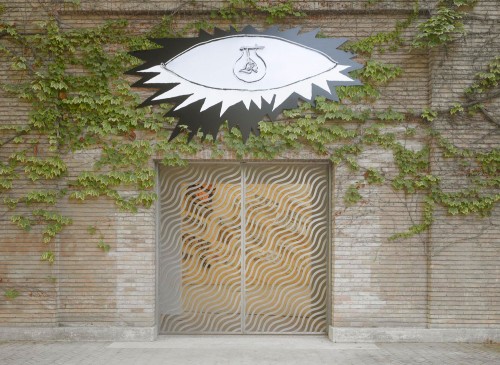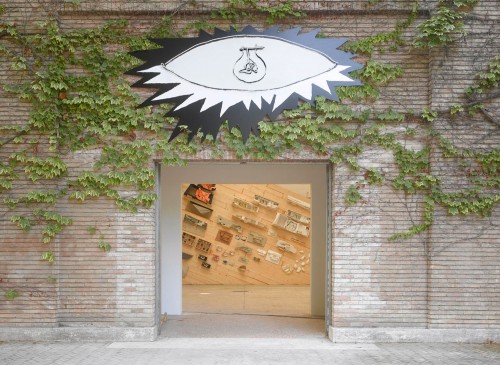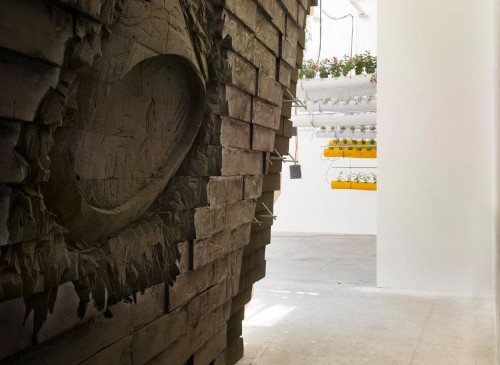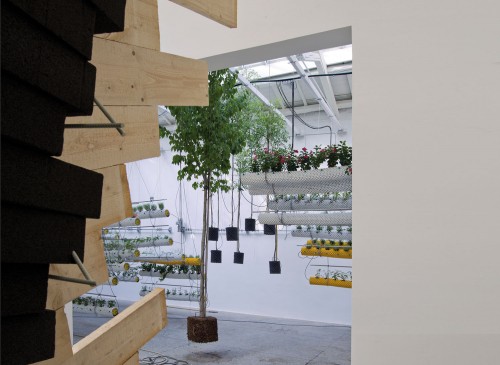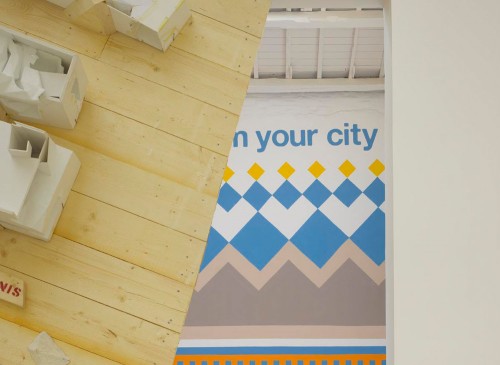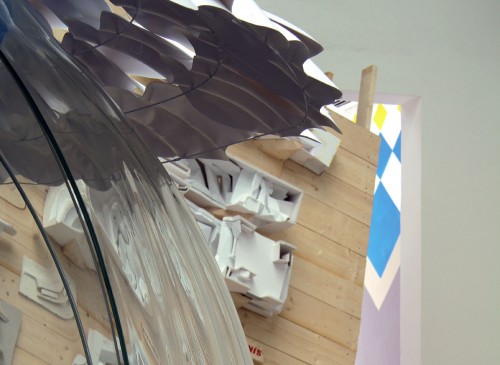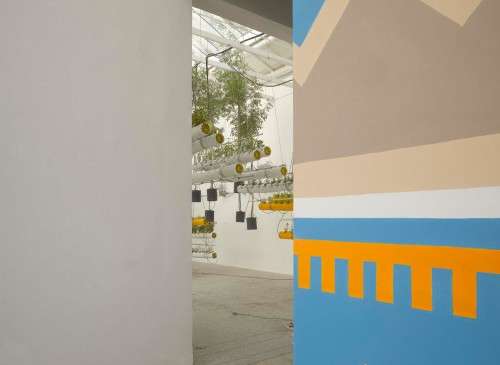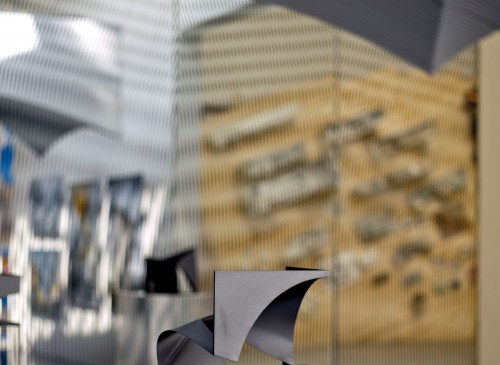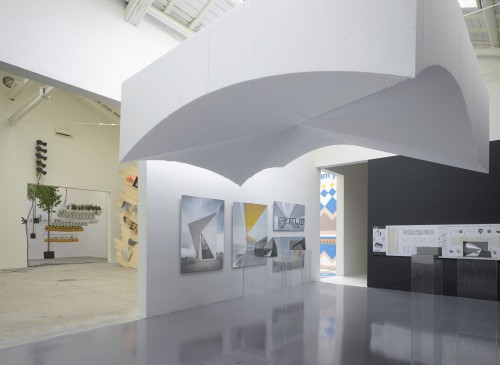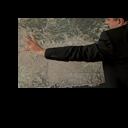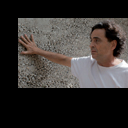
Spain Lab
4 texts to get into the SPAINLABOF DIASPORA AND CONQUESTS, by Nader Tehrani.
Some thirty years after the demise of Franco, Spain has surged as a significant force, its democracy being the manifestation of the collective voice of its many individuals, working in tandem to create some of the most progressive cultural and political movements of the contemporary era —gay rights, union by-laws, among other legislative accomplishments that not only mirror our times, but in fact proactively set in motion certain precedents for other nations to emulate. The architectural counterpart for this progressivism found its voice in the 1970s and 1980s, extending the Modernist Project, radicalizing it at a time when the rest of the Western world was rediscovering ‘history’ in the guise of ‘post-modernism’. As the skylines of some of the most wealthy economies of the time were being marked by resurgent icons of antiquity, in gestures both grave and comic, Spain collected its thoughts with a somewhat cool and complex restraint. Already engaged in the history of its cities, the urban complexities of its historic cores, the emergent challenges of its peripheries, its terrain vague, and the realities of the building industry, its confrontation with ‘history’ was at once profoundly deep-seated, but also brutally real —leaving little room for sentimentality. Spain was, in fact, focused on liberating itself from its most recent history; to exorcize this past, Spain not only needed to look forward, but also to re-examine the irreducible aspects of the architectural discipline as a way of demonstrating how architecture can become a cultural artifact that has the potential to produce new forms of knowledge. It did this with a dual agenda: to demonstrate that the discipline needed to engage the social, political, and economic dimensions of cultural life, but that it also needed to articulate that its ‘medium’ was a vital part of that engagement, inventing architecturally through mechanisms of urbanism, infrastructure, typology, construction, and even the details of specifying phenomena.
In reconstructing Spain in a post-Franco era, the country essentially had to re-enforce and in some cases launch the very institutions that would need to transition from a centralized authority to the shared responsibilities of a democratic state. If Franco’s project had been to enforce unity where there was none, the post-Franco era had to come to terms with a democracy that could tolerate the idea of “differences” in a state that required consensus to operate.
Not lacking its own significant voices of the Modern Era —among them De la Sota and Oíza, both of whom contributed to the grand traditions of modernist thought, Spain also had a variety of other voices that did not fit neatly into the pre-established categories of its time. Figures such as Fisac, Higueras or Torroja generated a series of visions, practices and protocols for architecture that spoke to a form of individualism that escaped the orthodoxy of modernist practices, albeit with a measured understanding and address to its public mission. Strangely, in rebuilding a public discourse in the 1980s, the formal manifestations of Spanish architecture re-indoctrinated the canons of modernism, with the re-fabrication of the Mies German Pavilion as its mantelpiece. To the outside world steeped in the debates of Aldo Rossi, Colin Rowe and the Krier brothers, this was seen as a deliberate confrontation with the dominant discourse of the time, liberating in many ways. However, ironically, if measured by the more heretical protagonists of Spanish modernism, this was in fact a retreat from the kind of research, experimentation and speculation so characteristic of the Fisacs of the era just prior; this was the beginning of a kind of new orthodoxy in Spanish architecture.
Notwithstanding, what fueled the Spanish resurgence was an unprecedented investment in the country’s infrastructure, housing and institutions leading not only up to the 1992 Olympics, but extending beyond into the new millennium. This portfolio of work, while provincial in its investment, spoke to an architectural discourse that was global in reach —what many students of the West viewed with yearning and jealousy, not only because of the quality of individual works, but the promise it suggested that architectural discourse could seal a social contract binding the autonomy of the discipline’s instruments and techniques to the very political and social practices that can transform reality, the city and its society. Today, as we look back on this work, the borrowed money and the debts incurred, we can only be in awe of the consistency and rigor of this “body” of work —the evidence that, beyond dubious fiscal practices, an intense and focused discourse was built, one that produced strong conventions, shared debates and a consensual platform from which ‘difference’ was constructed. In turn, this was a measure of its democracy, using a collective platform to gauge individual agendas.
From the American perspective, where democracy is cast in terms of the rights of the ‘individual’ —and where today any reference to the collective is slammed as socialism— this body of work was not only mythicized in the halls of academia, but also summarily confronted in the trenches of practice. Let us not forget that one of the paradigmatic terms of urbanistic discourse today, the “Bilbao Effect”, owes its debt to America’s most vocal protagonist of individual expression. The Guggenheim franchise attempted to address urbanism, the economy, the construction industry and architectural discourse all through the singularity of one architectural artifact: a protean icon, but not indestructible.
Fast forward: the global economy crumbles and Spain finds itself at the center of a delicate balance, immersed in economic circumstances in which it was both perpetrator and victim. As the current generation contemplates its options, the global stage is the only recourse for many; China, Korea, Taiwan, among other markets in Asia, offer some of the more immediate remedies of hunger, albeit with compromises at total odds with the disciplinary rigors to which Spanish architecture has become accustomed. Other alternatives have also formed in the Americas, both North and South. After four hundred years, a rediscovery of the New World offers a new way to see this diaspora: less as a reckoning with compromise, but as a promise for new conquests. A captive audience awaits this generation —but a generation whose main production may not be buildings, but architectural discourse. Let us not forget that this is not the first generation of spanish architects impacting the new world. Just within the modern era, figures like Jose Luis Sert and Rafael Moneo have set important examples —not only of how spanish culture has been imported, but also how architecture knowledge has been transformed through their eyes due to their new context. For instance, the concept of “urban design” as it has been coined is arguably a unique invention delivered by the American Sert. Moneo, too, brought a far wider debate to american pedagogy beyond the reductive discourses of postmodernism in which it was entrenched.
In the North, with Princeton, Harvard and MIT at the forefront, other institutions have also come to terms with the wealth of intellectual assets that is at stake in the importation of this generation. Of these institutions, MIT has a history that resonates in a unique way with the agendas of this generation. With a pedagogy bridging the culture of arts, science and technology, its main contribution to architectural culture has been in the form of research, speculation and experimentation —the very attributes that are the centerpiece of the 2012 Spanish Pavilion. Maybe it is no coincidence that its curators, García-Abril and Mesa, are at once key protagonists in the current Spanish scene, but also the leaders of the POP lab at MIT. Their own brand of work, steeped in the realities of construction practices, is also demonstrative of the model of curatorship they have advanced: less invested in a school of thought, a style, or a movement, but a dedication to the intensity of research, focus, and individualism that can only emerge from the strength of a collective discourse. García-Abril and Mesa have brought together seven individual teams of vastly different focus, each of them masters in their own domain; fiercely independent, each has developed an intellectual pedigree of their own, apart from the very Spanish culture which binds them.
What will in a few years be defined as a brain-drain from the Iberian Peninsula, will in all probability be a new chapter in the exploration and speculation of this generation —less of an escape from the homeland, but the opportunity to advance their research in the New World, and perchance to demonstrate its relevance upon return
—¡Ojalá!

